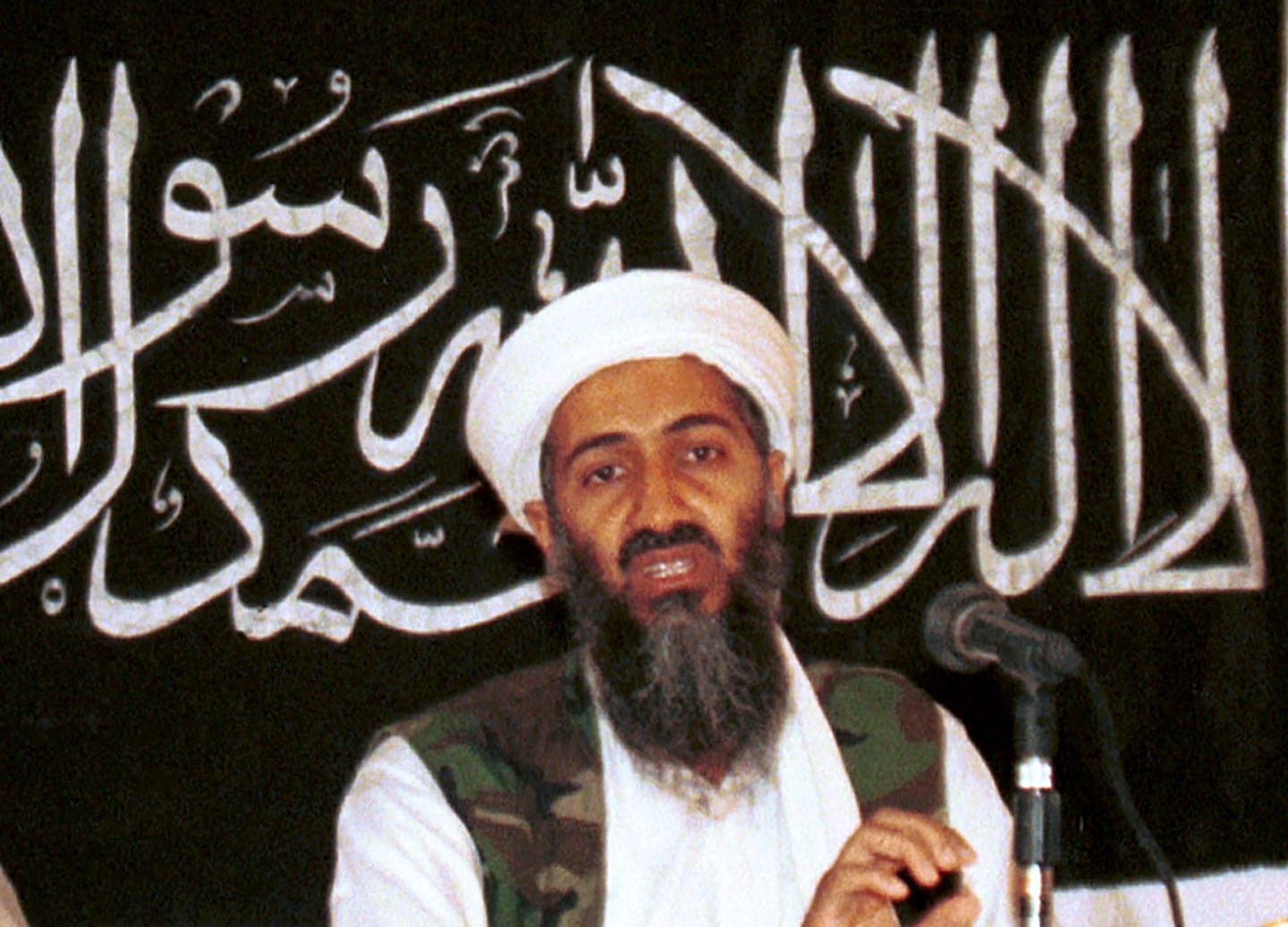TikTok is no stranger to quirky trends — from beauty tips about calamine lotion, to obsessions with the Roman Empire. But this week much darker content is trending — a letter from al-Qaeda leader Osama bin Laden that was published more than 20 years ago, well before his death.
The long letter, published just over a year after the terrorist attacks of Sept. 11, 2001, includes bin Laden’s grievances against Western involvement in Muslim countries — a mainstay of jihadist propaganda — and criticizes America’s support of Israel and its policies in the Palestinian territories.
It also criticizes Western “lies, immorality and debauchery” — “acts of fornication, homosexuality, intoxicants, gambling and trading with interest” — and argues that attacks against civilians and the United States are justified as a result.
Despite running thousands of words, and being written two decades ago by a terrorist leader who is no longer alive, the letter has gone viral on TikTok amid polarization over Israel’s war against Hamas in the Gaza Strip.
“So I just read ‘A Letter to America’ and I will never look at life the same, I will never look at this country the same,” one TikTok user said in a video that gained 1.2 million views in less than 24 hours.
Another person said they were “trying to go back to life as normal” after “realizing everything we learned about the Middle East, 9/11, and ‘terrorism’ was a lie.” Yet another one wrote that the experience of reading the text in college “change[d] my entire perspective on the American government.”
The sudden surge of interest also led the Guardian, a British newspaper, to pull from its website a decades-old piece containing the full letter. That article, published in 2002, detailed how the letter was being shared among Islamist extremists in Britain amid government warnings that al-Qaeda attacks in the country were “inevitable.”
Perhaps unavoidably, some social media users found the removal suspicious, with one person accusing the newspaper of “actively censoring” information.
Charlie Winter, a specialist in jihadist affairs and director of research at the intelligence platform ExTrac, said in a telephone interview Thursday that he was “frankly really quite surprised at the response” to the letter, which he described as “a kind of core doctrinal text” for both al-Qaeda and the Islamic State.
In addition to long-standing grievances, the letter contains “blatant language that is clearly calling for acts of genocide, clearly calling for or justifying indiscriminate acts of violence against civilians, clear justifications for killing noncombatants in any nation that is democratic and is fighting against a Muslim-majority state,” he said.
“It’s not the letter that is going viral. It’s a selective reading of parts of the letter that’s going viral,” he said. “And I don’t know whether it’s because people aren’t actually reading it or, when they’re reading it, they’re reading the bits that they want to see or, you know, the bits that they want to see are sinking in.”
A spokesperson for the Guardian said in an emailed statement early Thursday that the transcript had been taken down after it was “widely shared on social media without the full context. Therefore we have decided to take it down and direct readers to the news article that originally contextualized it instead.”
The Guardian isn’t the first newspaper to print texts that have incited or justified violence: On the FBI’s recommendation in 1995, The Washington Post and the New York Times agreed to jointly publish the 35,000-word manifesto of the Unabomber in a special edition of The Post, after a threat was made to carry out more attacks if they refused.
The editors of the Guardian faced a “no-win scenario” once interest in bin Laden’s letter began to grow, Marco Bastos, a senior lecturer in Media and Communication at City, University of London, said in a telephone interview. “If they don’t take down the content, the content will be leveraged and it will be discussed, potentially shared and is going to go viral — if not out of context, then certainly outside of the scope of the original piece. If they take it down, they’re going to be accused, as they are right now, of censorship.”
Back at the time of publication, the editors “just expected that this letter would be read critically, you know, adversarially — the expectation is that you would process this within the view — or the bias, if you prefer — of the Western side of the events. And now it’s being consumed, distributed and shared to push an agenda that’s precisely the opposite of the one that it was originally intended for. Hence, of course, they’ve taken down the content.”
Journalists are well aware that their stories may take on new life long after they’ve been published, but Bastos said this is more common with human interest stories that don’t have a specific news angle.
“What is different about this case is that what is resurfacing is a content of inherent news value,” he said. “And of course, it’s super polarizing. But that speaks to another contextual variable that we have to take into account, which is the fundamental demographic shift in the U.S.,” he said, referring to how younger generations show higher levels of support for the Palestinian cause, something that took American pundits “by surprise.”
Winter, the jihadist affairs specialist, noted that the text does not appear to have been pushed from extremist sources but rather seems to be spreading organically and enjoying “an uncritical resonance.”
“And that’s kind of ironic,” he added, “because one of the lines being taken in relation to it is that people who consider themselves to be critical consumers of mainstream media are consuming this very uncritically and not thinking about the context around it, not thinking about everything that happened just over a year before it was published as well, in any meaningful way.”
